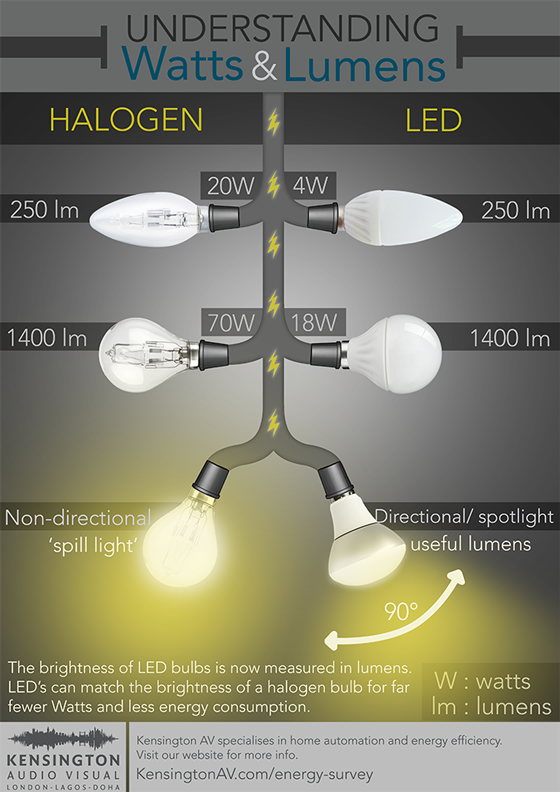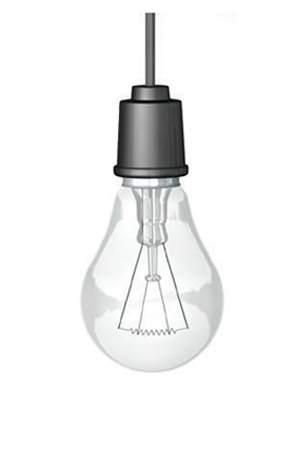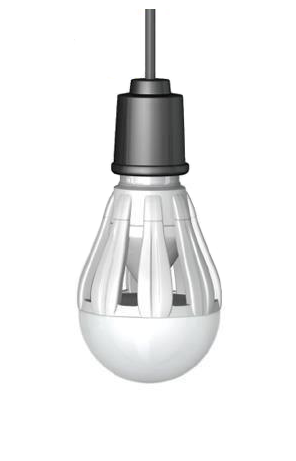Watts are a measurement of how much power a traditional bulb will consume. Lumens actually represent light output.
With incandescent and halogen bulbs, a higher wattage would generally relate to more light, but LED’s are now producing the same amount of light for 1/10th of the wattage or power consumption. For example, a 6.5 Watt LED will output the same light in lumens as a 60 Watt incandescent. Hover over the bulbs below.
Lumens and Useful Lumens
Total lumens is a measure of visible light emitted from a bulb in all directions. Golfball-shaped bulbs, such as the illustrated incandescent emit light in all directions. As a result, the total lumens will include ‘spill light’, reducing the actual light received.
Therefore, the EU has defined a ‘useful lumens’ rating as the amount of light emitted in a 90 degree cone from the source.
Another advantage of LED’s is the light is far more directional reducing ‘spill light’ for added efficiency.
Therefore, LED’s provide much more light for your energy (Watts).
So the wattage value is redundant as an indication of how much light you will get. You should consider how many lumens you need and then buy an LED bulb that draws the lowest wattage to reach your highest energy efficiency.
The infographic below provides a visual guide to converting watts and lumens.


